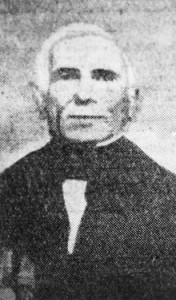In mid-September 1824 the government brig Amity sailed into Moreton Bay and deposited Lieutenant Henry Miller at Red Cliff Point on the peninsula opposite Moreton Island. He was accompanied by his pregnant wife and children, surgeon/storekeeper Walter Scott as well as twenty soldiers, their families and twenty-nine convicts.
Tents were erected, supplies off-loaded from the Amity, and the convicts were put to work felling timber, cutting slabs, gathering grass for thatch, making bricks and building the Commandant’s prefabricated house. All of this under the watchful eyes of the Ningi Ningi people who inhabited the peninsula and wondered what was going on. Were these white invaders magui, the returned spirits of ancestors, good and bad, who had come back from some far off place?
The settlers were plagued with illness, lack of medical supplies, a failed attempt at growing vegetables; the eight or ten sheep they had brought with them had disappeared never to be seen again. The relationship with the Ningi Ningi soured when a soldier shot and killed one of the tribe at Yebri Creek, which flows into the North Pine River near Petrie. A number of convicts were speared in revenge. Progress was slow under the scorching sun of summer.
Governor Sir Thomas Brisbane decided to move the settlement to a site on the Brisbane River chosen by surveyor-general John Oxley and named Breakfast Creek. When a passage into the bay was found between Moreton and Stradbroke Islands, Red Cliff became redundant as it would no longer be on the direct route to the Brisbane River.
Commandant Miller made the move in May/June 1825, not to Breakfast Creek, but to a site further up the river to where the CBD stands today. The Turrbal people, who lived on the north bank, called the neck of land jutting into the river meanjin, meaning in the shape of a spike. Governor Brisbane asked his friend Chief Justice Forbes to suggest a name for the place and he chose Edinglassie after his ancestral estates near Aberdeen in Scotland. Popular belief has the name originating from a combination of Edinburgh and Glasgow but this has been challenged by researchers who state that it comes from old Scottish “Eudan-glasaich” (phonetically spelt) which means “hill face of the pasture” or “leyland” (fallow land). In any case, no one liked the name and it was soon changed to Brisbane Town in honour of the Governor.


